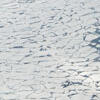You are here
A Carousel for Science
11.06.2017, by
The Coriolis rotating platform is the world’s only research structure of its kind devoted to fluid mechanics. First set up in the 1960s at the Laboratoire des écoulements géophysiques et industriels (LEGI) in Grenoble, it was rebuilt in 2014 with enhanced performance. It enables scientists from around the world to study the effects of the Coriolis force, a physical force generated by the Earth’s rotation, on atmospheric and oceanic turbulence.
The Laboratoire des écoulements géophysiques et industriels is a joint research unit between the CNRS, the Institut polytechnique de Grenoble and the Université Grenoble-Alpes.
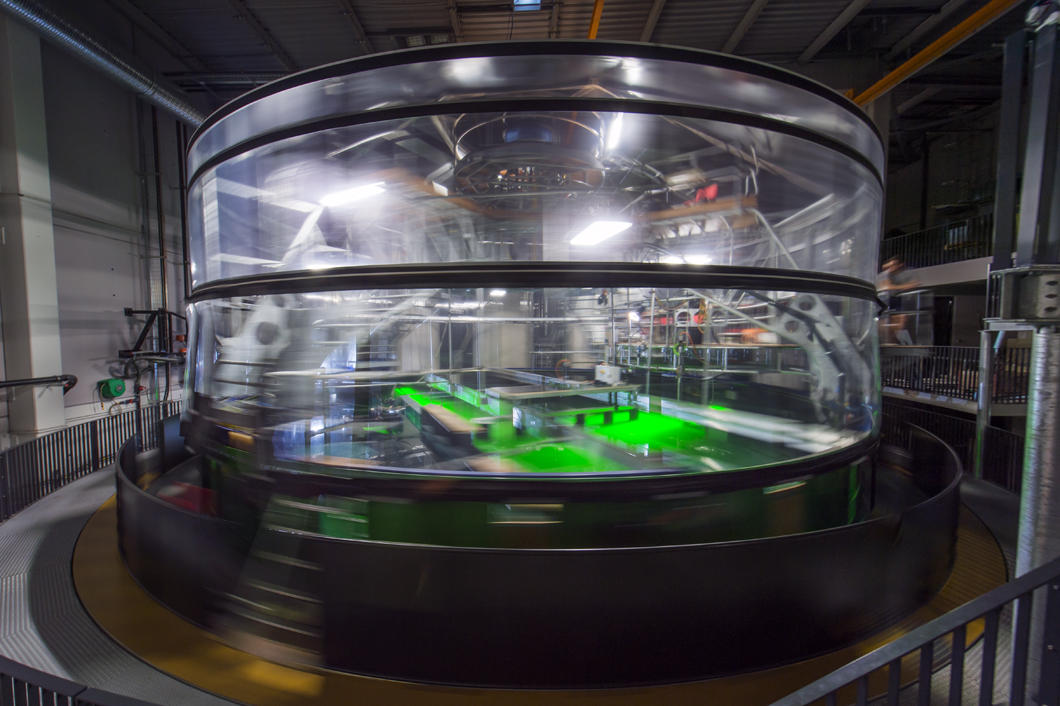
1
Slideshow mode
This extremely large rotating machine can be used to simulate conditions found in natural environments. The tank measures 13 m in diameter and holds up to 130 tonnes of water. The total height of the device is 12 m.
C. Frésillon/LEGI/CNRS Photothèque
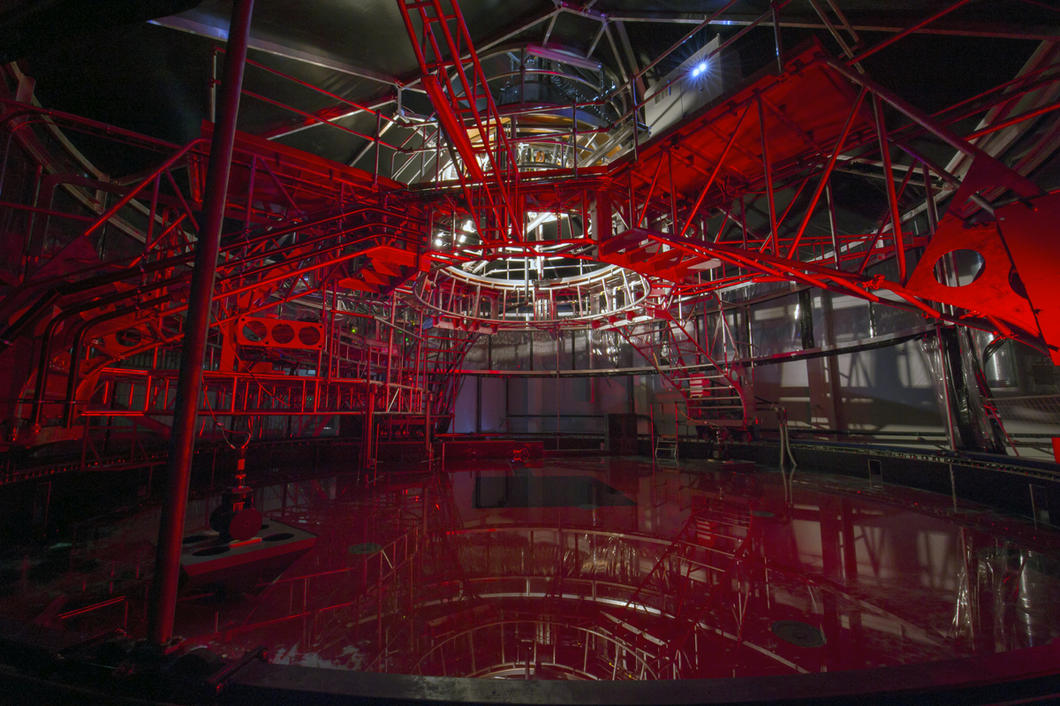
2
Slideshow mode
Scientists can work on top of the rotating platform. Experiments are managed directly via the control desk on the instrumentation gantry. The latter, located directly above the tank, also holds all necessary equipment such as lasers, profilers, video cameras, and so on.
C. Frésillon/LEGI/CNRS Photothèque
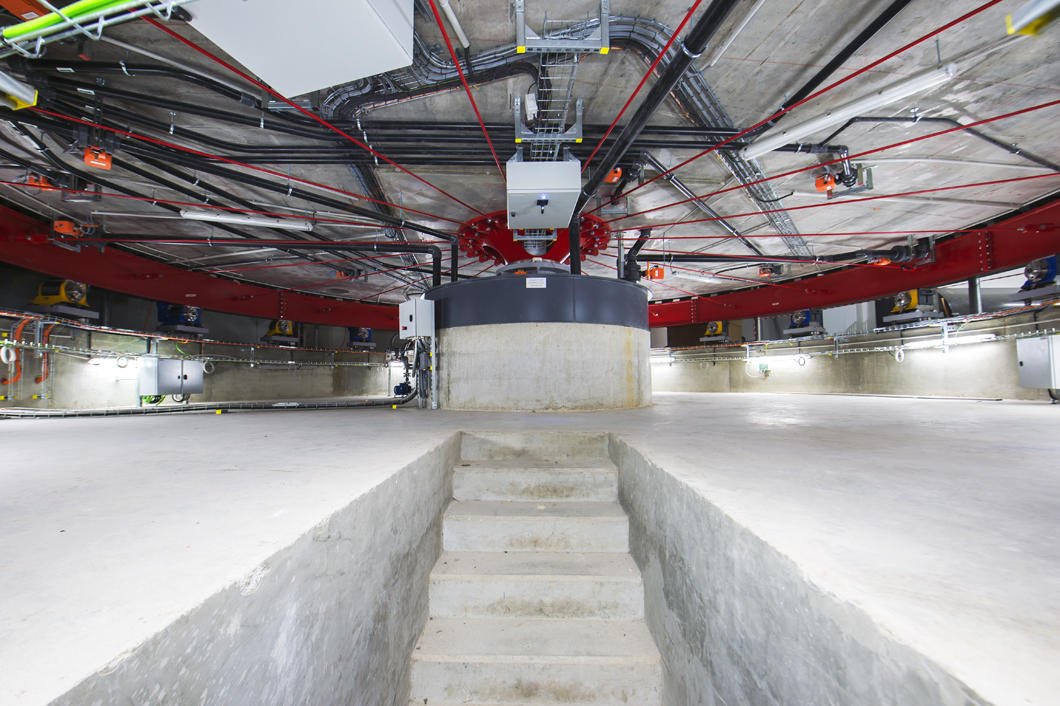
3
Slideshow mode
The platform seen from below. A 220-tonne concrete slab supporting the water tank sits on a central pivot and a circular rail. A series of yellow supporting rollers and blue motorized rollers make it possible to turn the rail and rotate the platform to reproduce the Coriolis force.
C. Frésillon/LEGI/CNRS Photothèque
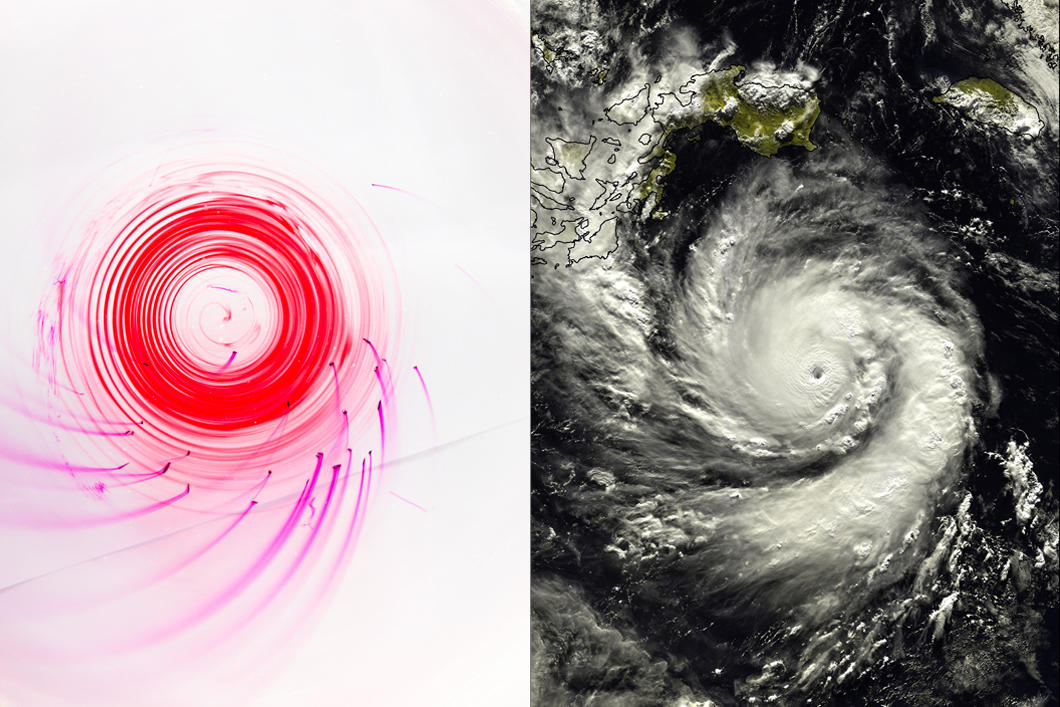
4
Slideshow mode
On a smaller scale, scientists use a 40-cm teaching platform to explain the principle of the Coriolis force to visitors. The Coriolis effect can be observed by means of a fluid and a dye: all moving objects at the Earth’s surface are deflected from their trajectory. In this case we see a typhoon in the northern hemisphere (Pacific Ocean) (geographic north to the right), whose trajectory is affected by the Coriolis force.
C. Frésillon/LEGI/CNRS Photothèque - Météo France
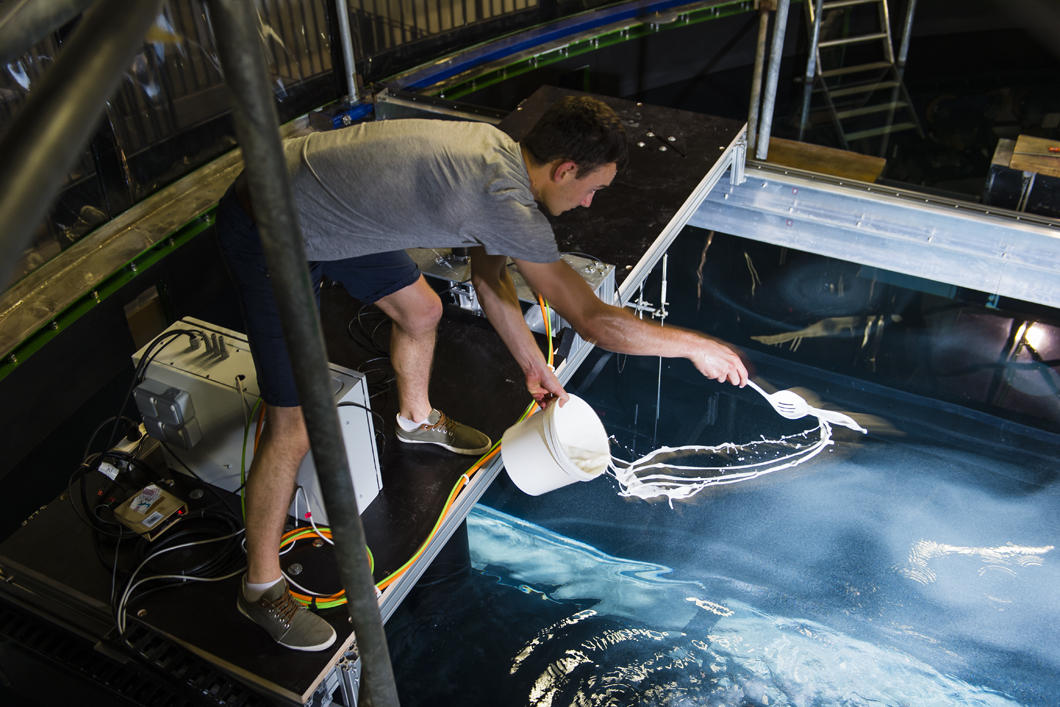
5
Slideshow mode
A scientist adds particles to the water to view the swirls created. The aim of this study, which forms part of the European EuHIT Milestone project (undertaken jointly by the CNRS and the University of Stockholm), is to understand turbulence in environments such as oceans or the atmosphere, which comprise several layers of different densities.
C. Frésillon/LEGI/CNRS Photothèque
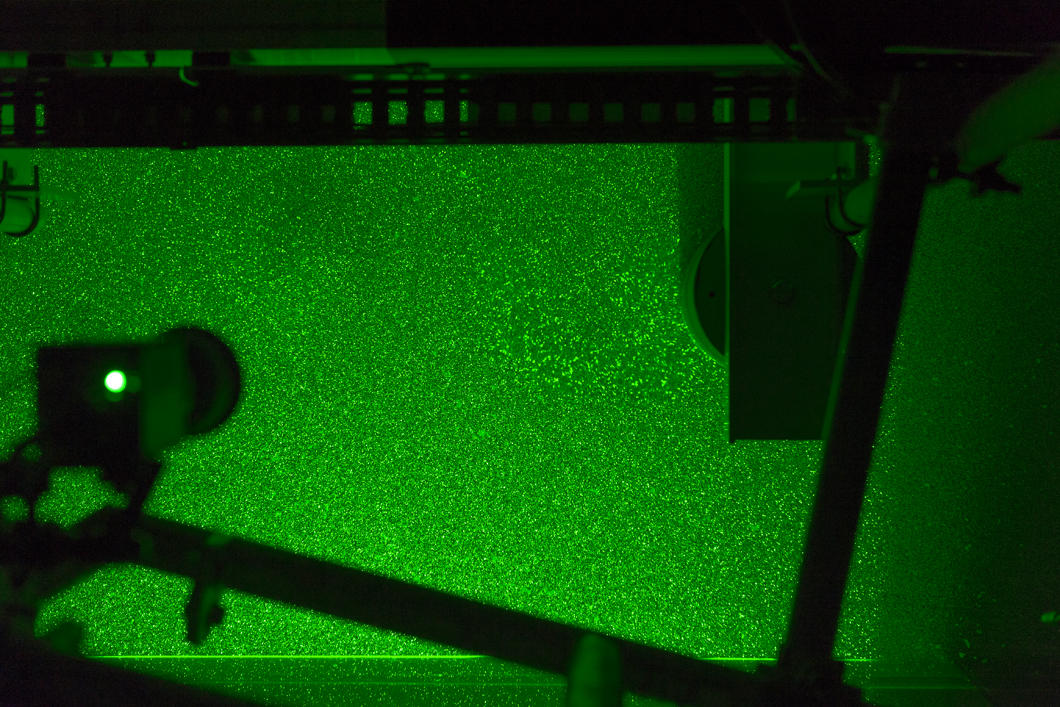
6
Slideshow mode
In the top right of the picture, a cylinder is displaced horizontally, causing movement in the water, resembling stirring with a spoon. On the left, a video camera records the displacement of the particles illuminated by laser.
C. Frésillon/LEGI/CNRS Photothèque
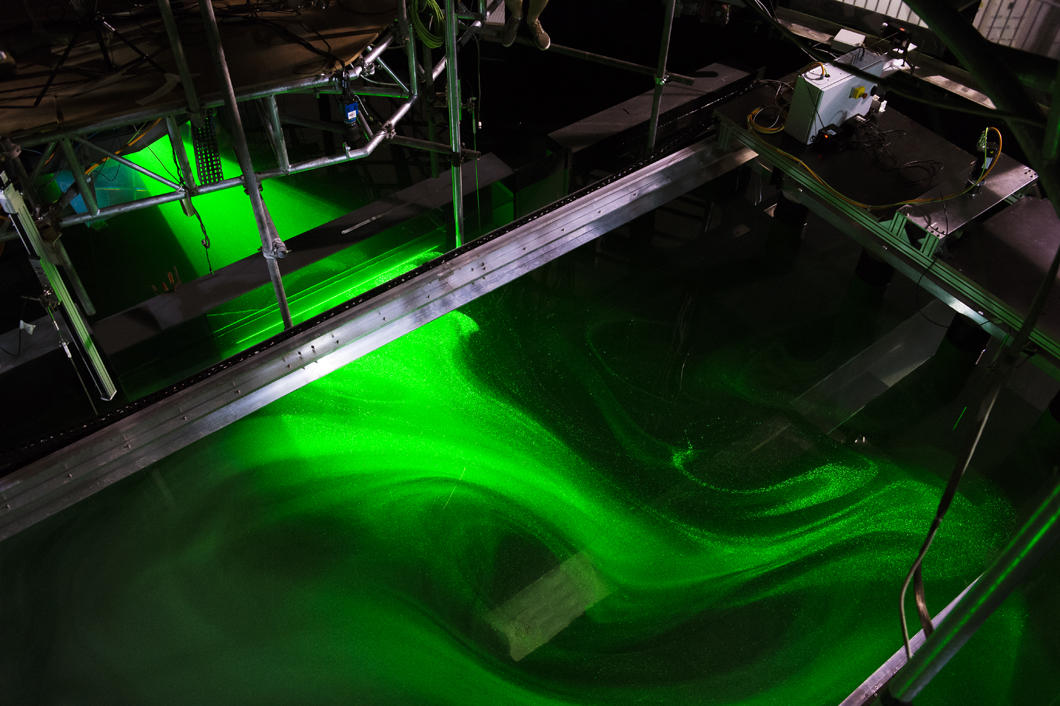
7
Slideshow mode
In the water, the patches of particles make it possible to observe the swirls created by the cylinder's passage. The scientists subsequently measure these trajectories and the structure of their flow to better understand meteorological and climatic phenomena.
C. Frésillon/LEGI/CNRS Photothèque
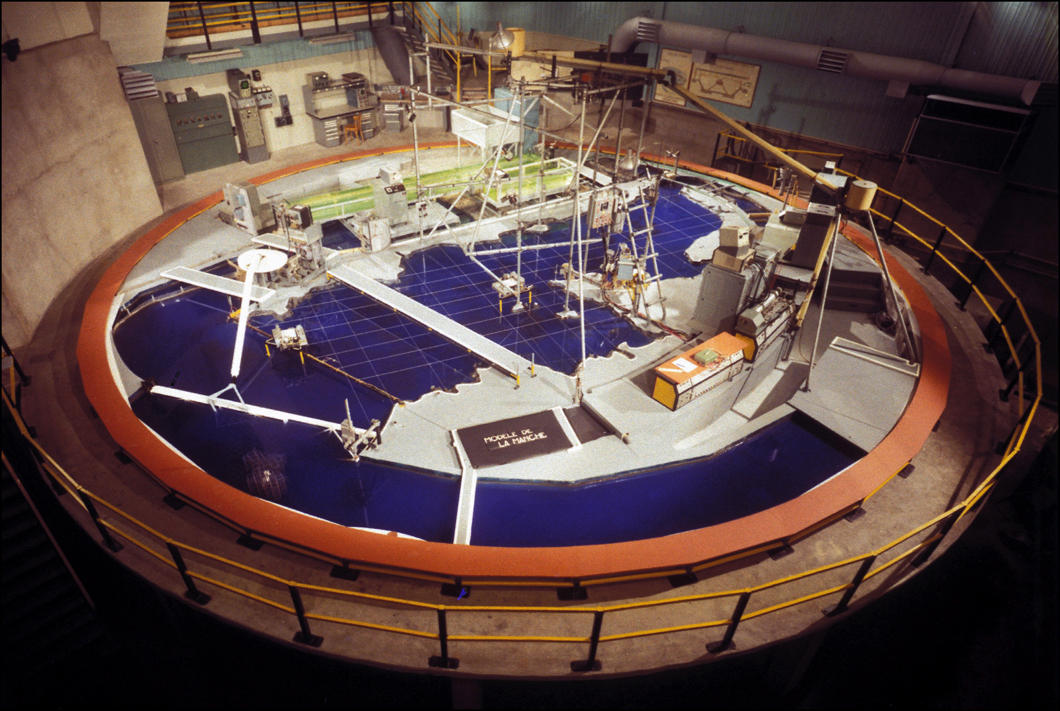
8
Slideshow mode
Here we see the Coriolis rotating platform as it was in the 1960s. This scale model, which reproduces part of the English Channel, was designed to study the effects of the Earth’s rotation on currents and tides as part of a project for a tidal power plant. At the bottom is the French coast, and at the top the English coast.
V. Rambaud/IMG/CNRS
Explore more
Matter
Article
10/27/2025
Slideshow
07/17/2025
Article
07/07/2025
Article
03/26/2025
Slideshow
03/19/2025






